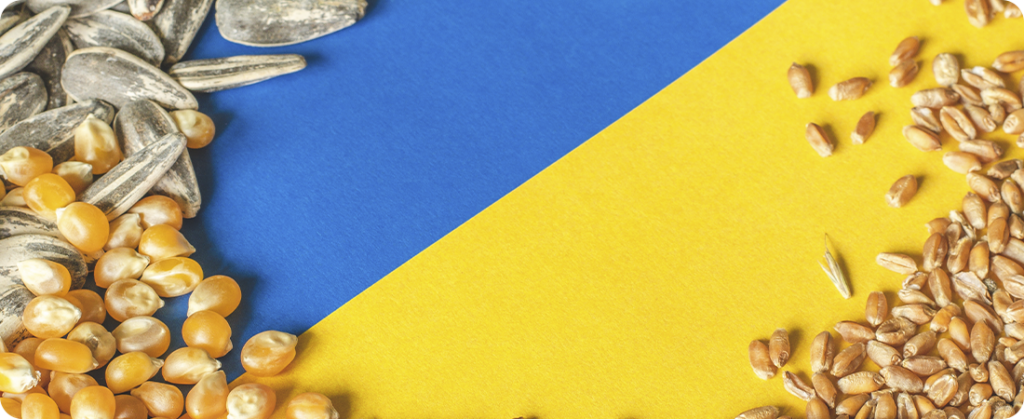
Russian attacks on Ukraine's ports and ships have destroyed about 300,000 tons of grain since July, Reuters reported, according to the Ukrainian government.
Ukraine's Deputy Prime Minister Oleksandr Kubrakov said in a statement that Russian military forces had attacked six civilian ships and 150 port and grain facilities in 17 attacks since Russia withdrew from the Black Sea Grain Initiative (BSGI ) in July, facilitating agricultural exports from Ukraine. These attacks destroyed crops that were supposed to be exported.
“This is Russia's attempt to deepen the food crisis in countries that depend on Ukrainian products,” Kubrakov said, adding that damage to Ukrainian ports reduced the country's grain export potential by 40%.
Ukraine maintains grain export flow amid tensions in the Black Sea
Reuters reported that at the time of reporting, it was unable to immediately contact the Russian Defense Ministry for comment.
Despite the attacks, Kubrakov said 21 grain-laden ships have so far used a new humanitarian grain corridor introduced by Ukrainian authorities on August 10 to protect shipments to and from the Black Sea ports of Pivdennyi, Odessa and Chornomorsk (POC ).
AgriCensus wrote on October 9 that grain export levels from Ukraine's deep-water ports had increased to levels comparable to those at the start of BSGI, with approximately 800,000 tonnes loaded or expected to be loaded to date.
At the time of reporting on October 9, eight vessels had departed, carrying about 242,000 tons of grain and iron ore.
AgriCensus wrote that at least 560,000 tons of cargo were expected to be exported so far, and another 14 ships had arrived or were en route to Ukrainian ports.
Challenges and achievements in oilseed exports
The export rate was comparable to the flow during the first month after the introduction of BSGI on July 27, 2022.
At the time of the AgriCensus report, it was unclear whether the Ukrainian humanitarian corridor could maintain the same results or expand in the same way as BSGI. Additionally, there were some notable challenges, most notably the presence of Russian naval forces in the Black Sea.
Navy spokesman Dmytro Pletenchuk said in an online press conference on October 4 that Ukraine's defense forces were doing everything to ensure the safety of civilian ships in its territorial waters and that they were entering the waters of NATO members Romania, Bulgaria and Turkey.
Traditionally, Ukraine sends most of its exports through deep-water Black Sea ports. However, since Russia's invasion in February 2022, it has increased its export volumes through Danube river ports. Furthermore, Ukraine has been strengthening its export connections across the western land border with the European Union.
Despite logistical challenges in Ukraine, exports of oilseeds and derivatives increased year-on-year in 2022/23. This is indicated by a Fastmarkets report dated September 12.
Ukraine's sunflower oil exports and their rise in the EU from 2022 to 2023
From September 2022 to August 2023, Ukraine exported 5.6 million tons of sunflower oil. This represents an increase of 25% compared to the previous season, according to the Ukroliyaprom Association for Extraction and Processing of Fat and Oil Products.
BSGI operated for most of the marketing year. Furthermore, overland exports were prominent last season. According to the report, they represented around 23% of total exports.
According to the European Commission, Ukraine has increased its share of sunflower oil imports into the EU. It now stands at 89% for the September 2022 to August 2023 season, compared to the 82% recorded in the previous season.
EU leads, Türkiye on the rise and changes in global participation
EU countries are now the main importers of Ukrainian sunflower oil.
Turkey more than tripled its purchases of Ukrainian sunflower oil to 1.1 million tonnes in the 2022/23 season. Increasing its share to 19.2%, according to Ukroilprom data.
China's sunflower oil purchases saw a significant increase, growing 80% in volume to 636,800 tons. Furthermore, China's share of Ukraine's sunflower oil exports increased to 11.3%. This rate is higher than the 7.9% recorded in the 2021/22 season.
Exports to India fell 41% to 612,700 tonnes. India's share of Ukrainian sunflower oil exports fell by more than half to 11%.
Ukraine is one of the world's leading exporters of wheat, corn, barley and sunflower oil. In 2023, the forecast is to produce 79 million tons of grains and oilseeds. Furthermore, it is estimated that there will be exportable surplus stocks of around 50 million tonnes in 2023/24, according to information from Reuters.
Source: Oils & Fats International











